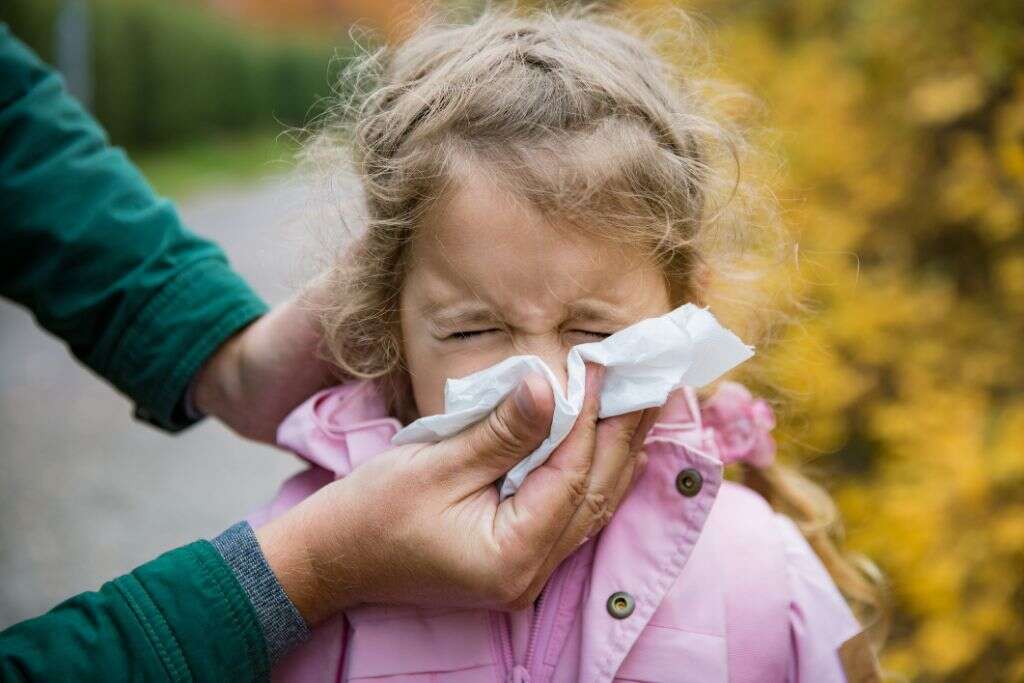10 Symptoms of Flu B
As you are probably well aware, flu season arrives without fail once a year through fall to late winter. While the flu affects thousands of people annually, it is extremely difficult to find an all-in-one cure as it is a virus that appears in slightly different variations each season. Not only is the flu different from year to year, but there are multiple rounds to every flu season that may come with different versions of the virus that affect people in varying ways.
Each season, the flu is divided into four categories know as flu A, B, C, and D. Flu A is generally considered the most dangerous. It appears early in the season and tends to get the most people sick. However, sometimes, including during the 2019-2020 year, flu B becomes equally, if not more, impactful. When flu B is more dangerous than usual, flu season has the potential to stretch out for a much longer time, creating a risk for people contracting it through late spring.

1. Fatigue
Often one of the first signs of flu, fatigue, is a vague but uncomfortable feeling that can affect a person’s entire body. Fatigue is an intense feeling of weakness. The affected person may lose all motivation and energy to do anything other than sit down or lay in bed. As with most flu symptoms, it may be different in each person that experiences it and can range from mild to severe depending on the individual case.
One important thing to keep in mind when discussing flu symptoms is that just because a person is suffering from some symptoms but not others does not mean that they do not have the flu. Since there is such a long list of symptoms, that most people will suffer from a handful of them while not noticing others. When trying to self-diagnose feelings of being sick, it is also important to consider other factors that could be causing the symptoms. For example, fatigue on its own may also be caused by a lack of sleep or a poor diet.

2. Fever
One of the more common indicators of flu is a fever. When a person develops a fever, they may also get associated symptoms, such as chills. While some amount of fever is normal for a sick individual, and may even help fight off the infection, being overheated for too long can be dangerous. If you suspect that you or a loved one is suffering from a fever, it can be important to monitor it closely and consider using appropriate medications to help the affected individual cool down.
While anything above 98.6 degrees Fahrenheit is technically a fever, elevated temperatures during sickness are considered to be relatively safe until the body temperature rises above 100.4 degrees. If a dangerously high fever persists, it can lead to health complications, especially for individuals with pre-existing conditions.

3. Nausea
Especially common among children suffering from the flu, severe nausea can lead to vomiting and discomfort. As with other symptoms, some nausea should not be a cause for panic. However, in cases of excessive vomiting, it is better to talk to a doctor just to be safe.
The best way to handle nausea and vomiting can be to have the affected person rest and try to encourage them to sip on liquids. Nibbling on bland foods, such as plain rice or bread, may also be helpful. Trying to avoid strenuous activity of any kind is also highly recommended.

4. Sore Throat
Generally, a milder symptom of flu, a sore throat may also be noticed by infected people. Cold liquids can help reduce pain associated with a sore throat. Over-the-counter pain relievers may also be helpful.
Be aware of other potential causes of sore throats, such as strep throat infections or other conditions, that may require you to visit your doctor. While the flu should resolve itself on its own, other types of illness, especially those caused by bacteria rather than viruses, may require prescribed medications to treat.

5. Headache
Headaches on their own are generally not an indicator of flu B; however, they may come hand-in-hand with other symptoms. As with a sore throat, pain medications may help relieve a headache, as well as getting rest and avoiding too much activity.
Other causes of headaches can be stress or lack of sleep. Oftentimes, spending some time in a quiet place to avoid too much stimulation can be all that it takes to relieve the pain. With flu-related headaches, the causes may be due to other symptoms, such as congestion and general aches and pains, and may be more lingering than the average headache.

6. Coughing and Sneezing
While it may also be the result of a cold, coughing and sneezing can also be a common flu symptom. If coughing is the main symptom you are experiencing, you should consider whether allergies might be the cause. Flu-related coughing often comes hand-in-hand with fever. Though flu B is a likely culprit for a person that has these symptoms, during the 2019-2020 flu season, people should also watch out for COVID-19, another highly-contagious virus that may also come with a fever and cough.
Coughing can be one of the more dangerous symptoms of flu, as it allows the virus to spread quickly between people. When a sick individual coughs, they send tiny droplets of moisture out into the air that can carry the virus to surrounding people. This is why affected people should always cough and sneeze into their elbow or a tissue. Other respiratory issues may also come up during the flu, such as chest pain or shortness of breath.

7. Congestion
Along with coughing, a person suffering from flu B may also suffer from congestion. The affected person’s nose may run excessively or become clogged. Typically, this can be treated similarly to the type of congestion that comes with a cold or allergies. It is a good idea to keep tissues on hand and consider other home remedies, such as warm tea, a hot shower, or a vaporizer. Congestion can be a persistent symptom, but it should be more uncomfortable than dangerous on its own.
Since flu B is generally more cold-like than flu A, if a person is suffering more from coughing and congestion, it can be a safe bet that they’ve caught it. However, as was mentioned briefly above, other viruses may also cause respiratory issues. If the symptoms become more serious, the affected person should consult a doctor as soon as possible.

8. Diarrhea
Another symptom that appears much more frequently among children than adults, diarrhea can be another issue to look out for if your kids are sick. While not the most commonly associated symptom of the flu, it still occurs in some people and may lead to an increased need for care. Besides being uncomfortable, diarrhea can come with its own issues of which anyone suffering from flu should be aware.
People with diarrhea can easily become dehydrated. If diarrhea or vomiting are symptoms your child is suffering from, it is vital that they drink plenty of liquids. Having the affected person drink juice or sip on water can be a good idea regardless of their symptoms, but in cases where dehydration is especially likely, it becomes even more important.

9. Worsening of Chronic Conditions
If a person suffers from any pre-existing health conditions, they may be at greater risk for flu-related health complications. Pregnant women, as well as those with chronic health issues, should be especially cautious about getting the flu. If any prescription medications are being taken, they should also be taken into consideration before using over-the-counter treatments, such as pain relievers, for flu-related symptoms.
People who are at high risk for flu complications should avoid being around those who are sick. If they start to develop flu symptoms, they should consult a health care professional as soon as they can to be advised on the best way to handle it in their unique situation. Other people who have an elevated risk of complications or even death from the flu are young babies and older individuals.

10. Pain and Discomfort
Body aches, muscle pain, and generalized discomfort can be an overlying symptom with all the others listed above. Unfortunately, when it comes to flu, the best treatment can be taking the needed time to recover. While it can be dangerous, and individuals suffering from severe cases should be taken to the hospital, it is often something that can be handled by resting and staying hydrated.
The best treatment for flu is to avoid getting it at all. The most tried and true way to do this is to get a flu shot every year. You should encourage your family to get vaccinated, as well as getting a flu shot for yourself. Often this can be done for a low cost at a local store or for free during events, such as wellness fairs. While the discomfort of getting a shot is not fun, it is far preferable to going through the flu, which can last for several days or more.









